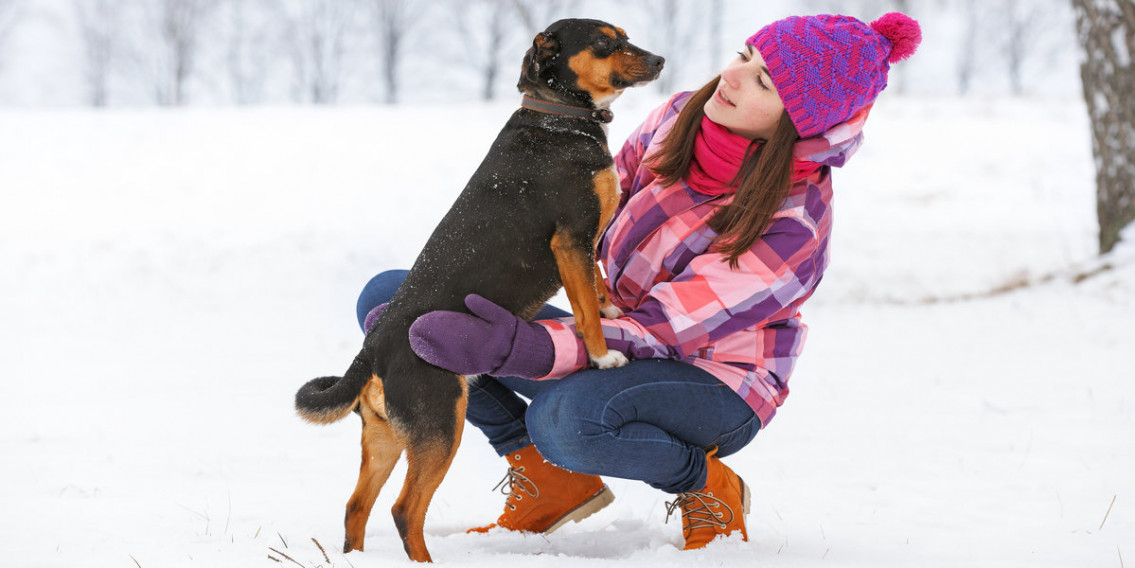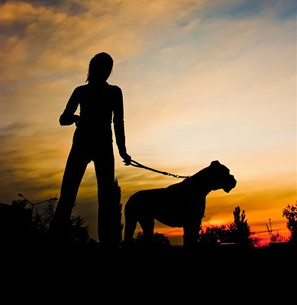
Walking dog at night - is it safe?
Many of us lead busy lives and in the winter months walking your dog at night or during the hours of darkness is often the only option. It goes without saying that one of your – and your dog’s – major senses, sight, is seriously impaired when it’s dark. This can lead to accidents and, potentially, an unwanted trip to one of our emergency clinics or 24/7 hospitals. There are several dog walking safety measures to consider to keep you and your dog safe when walking your dog at night or early morning.
When dog walking, light and bright is the best way forward
When walking your dog at night, there are two things you can do to make your walks easier and keep yourself safe. These are:
- Always carry a torch. Or better still, wear a head torch, as these leave your hands free
- Wear bright clothing. It’s equally important you wear a bright coat, ideally one with reflectors
How do I keep my dog safe when walking in the dark?
You’re far more likely to lose your dog in the dark, which means they run a greater risk of being knocked down by a car, motorbike or lorry. There are lots of things available to help you find your dog more easily. These include:
- Reflective gear. As well reflective collars and leads, consider putting reflective strips on their legs. If your dog wears a coat these can be bought with reflective patches, too
- LED lights. These lights are now lighter and brighter than ever and batteries last much longer. The clip-on versions can also usually be recharged via a USB
- LED collars. These can make it much easier to find your four-legged friend in the dark
Things to be aware of when walking your dog at night
Familiarity helps, so if you plan on taking your dog on a new walking route you should try to do it in daylight first. Other things to consider are:
- Other dogs. Meeting other dogs is more of an issue in the dark, so if your pet is nervous it’s probably best to keep them on a lead or within sight
- Other people. Consider joggers on paths and cyclists on bridleways
- Potholes and other objects. Be aware of broken glass and other sharp objects which can injure your dog’s feet. Lively dogs may also attempt to jump over fences or walls and may be unable to see the depth or the drop on the other side, or other hazards like barbed wire
- Cars and other vehicles. Road traffic accidents are a common cause of emergency admissions, particularly during the hours of darkness

Can dogs see in the dark?
Dogs see much better than we do in low light for a number of reasons, including:
- Their pupils are bigger so let in more light
- They have more rods in their retinas and these are designed for low light
- They have a tapetum behind the retina, which reflects light back again, so technically they see twice as bright
For those reasons don’t take anything for granted when walking your dog in the dark. Your dog may spot something you don’t and rush away in search of it. It’s often those unexpected bursts of speed that lead to an accident.

